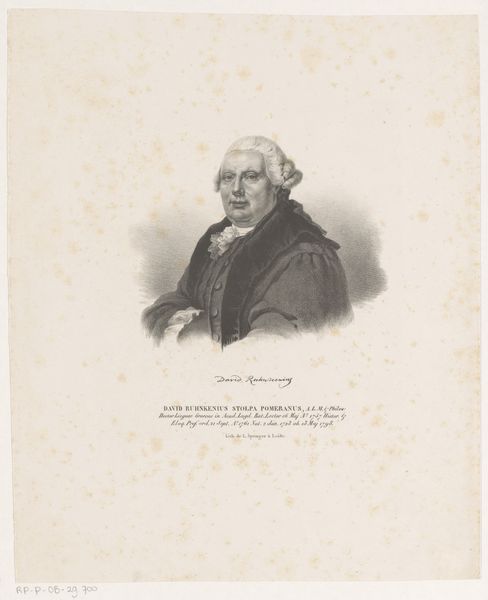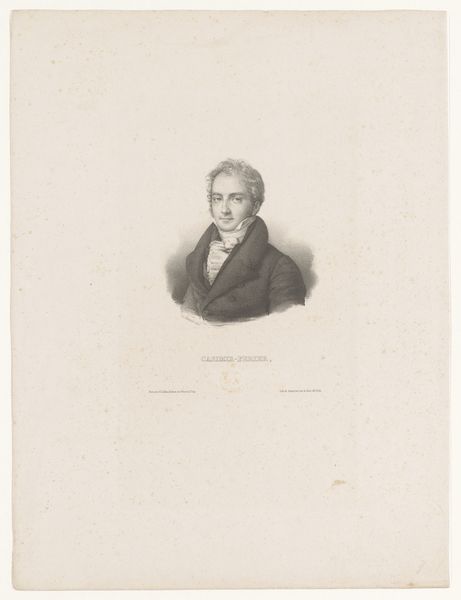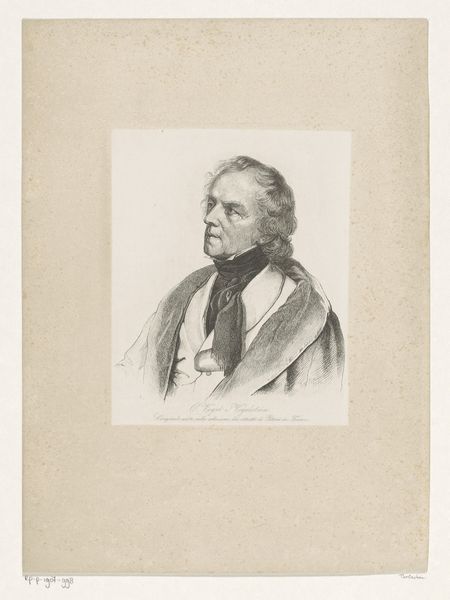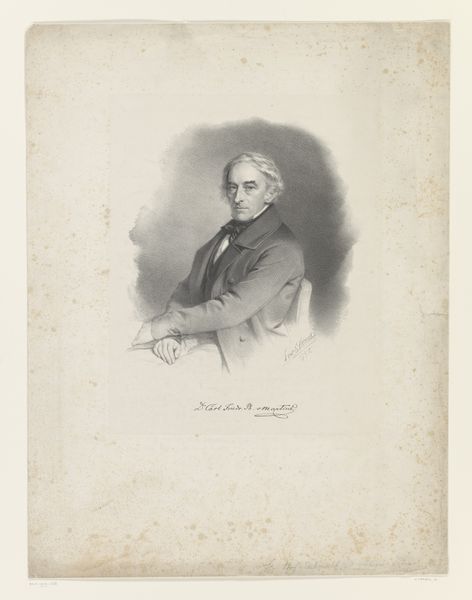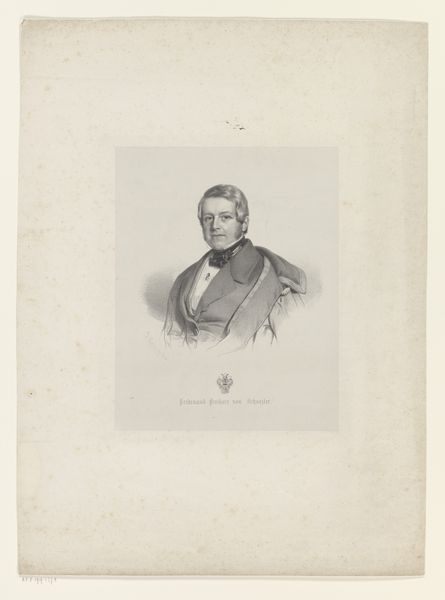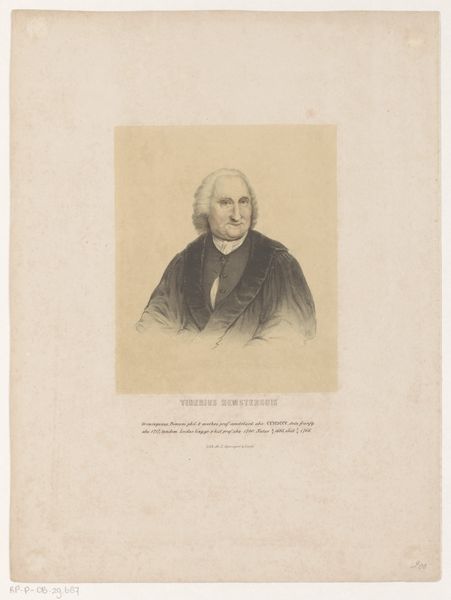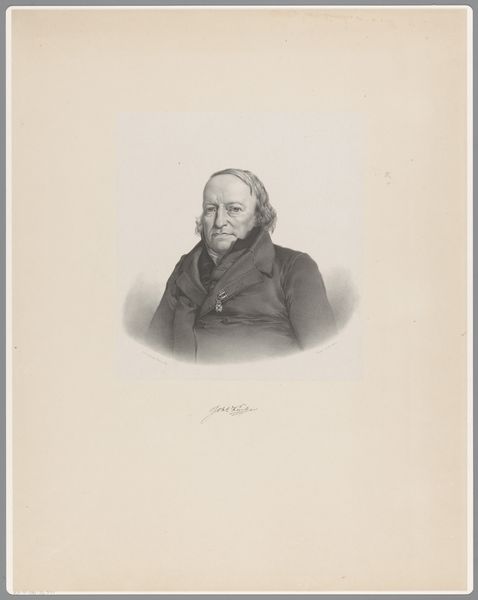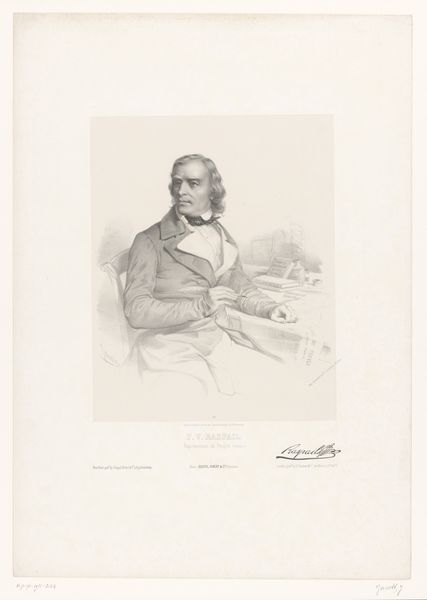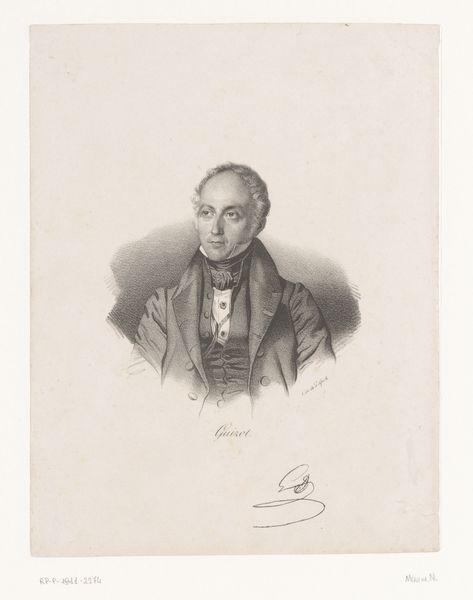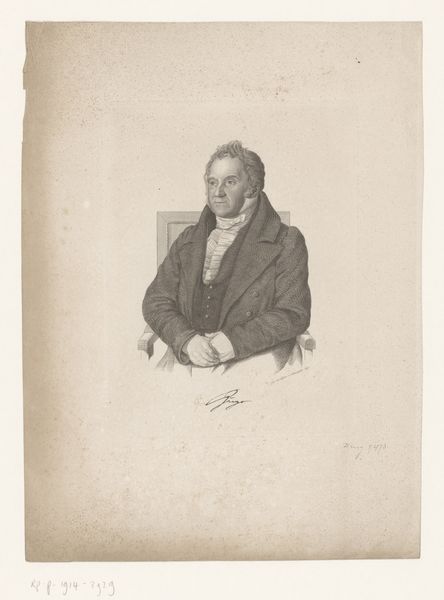
print, engraving
#
portrait
#
16_19th-century
# print
#
engraving
#
realism
Dimensions: height 582 mm, width 384 mm
Copyright: Rijks Museum: Open Domain
Editor: This is "Portret van Stoll," an engraving done in 1843 by August Dircks. It strikes me as a very formal and almost stoic depiction. What aspects of the engraving capture your attention the most? Curator: The linear precision achieved through the engraving process certainly dictates much of the visual experience. Consider the varying densities of lines and their directional shifts: Observe how Dircks employs them to sculpt form and capture subtle tonal gradations, which gives shape to Stoll's countenance and attire. What can you observe about the interplay between light and shadow? Editor: I see the light seems to define his face, particularly around his eyes and cheekbones, creating a sense of depth and realism, whereas the shadow adds drama to his cloak and the surrounding background of the composition. Curator: Indeed, and this juxtaposition isn't merely mimetic. The lines become symbolic: horizontality suggesting stability and age, diagonal creating a subtle sense of animation. Moreover, note the contrast of the figure with the negative space around it. The balance seems deliberate, reinforcing the stillness inherent to portraiture, almost highlighting its static quality. Is this a limitation, or could the formal constraints emphasize something? Editor: That’s interesting. I suppose the stillness and deliberate lines create a lasting, almost permanent, image of Stoll. This close examination makes me consider how much of the engraving's impact comes from its inherent material qualities and formal structure rather than simply what it represents. Curator: Precisely. This kind of awareness can drastically transform our viewing experience, enabling a much more critical engagement.
Comments
No comments
Be the first to comment and join the conversation on the ultimate creative platform.
